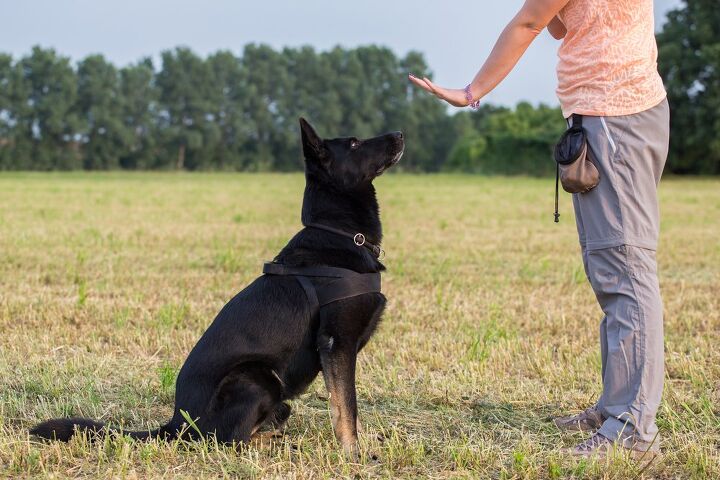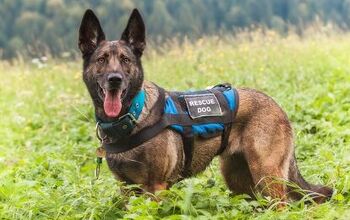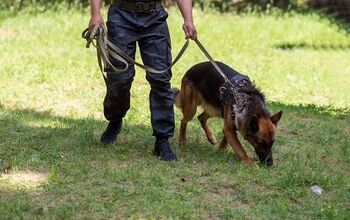How to Train a Deaf Dog

Whether your dog has lost his hearing due to age, illness or was simply born without this particular sense, he deserves to live his best life. And to ensure he feels fulfilled and connected while always staying safe, you need to provide him with training that’s easy for him to understand and respond to.
While his lack of hearing may not be an issue at home in an established routine and a familiar surrounding, your pet still needs to understand basic commands that will allow you to quickly communicate and take control when necessary. Because in addition to ensuring he demonstrates appropriate behavior in public situations, there is also any number of unsafe conditions including traffic, wild animals, and even threatening weather that can happen in an instant and require your pet’s full attention so you can guide him accordingly.
Let’s Get Started
Similar to when teaching the five basic commands of Sit, Stay, Heel, Leave It and Come, to a hearing dog, you’re going to rely on rewards-based training with your deaf pet. A tasty little treat is appreciated by all dogs to make the process a lot more fun, and net the results you want, faster.
When training any command to a dog without hearing, your first goal is to get their attention followed by their focus. After that, you’ll use sign language to communicate the command you need him to follow.
Heads Up
Below are some of the more popular approaches to capturing the attention of a non-hearing dog. All should include the offer of a reward or treat each time your pet redirects his attention your way. When he looks away, repeat the signal and when he responds, offer another reward. Eventually, your dog will connect whichever method you choose – laser, foot stomp, vibration collar – with the need to look over to you (and a treat!).
When at home or in a controlled, indoor environment:
- A soft touch on the back or shoulder is a gentle way to let your dog know that you want his attention without startling him.
- Laser pointers, waving arms, a hand motion, or stomping the floor also work when you’re across the room from your dog.
When outdoors and your pet is unleashed:
- A flashlight is a quick way to let your pet know that you need his attention.
- Vibrating collars (not shock collars) are also an excellent way to communicate with your pet. Particularly in an open area like a dog park, where your dog may not be within your sightline.
For a less structured but equally effective approach to keeping your dog engaged, give him a tiny treat every time he randomly looks over at you. He’ll soon learn that staying close, tuned in, and within your range of vision, really pays off.
Hand Signals
You can choose whichever type of hand signal works best for you and your dog. The only criterion is that you remain consistent, use it exclusively for that particular command, and keep gestures distinct from one another to avoid confusion.
And if you’re working with an older animal that’s losing its vision, you may want to avoid smaller gestures that can be hard for him to read from a distance.
Decide on the command you want to train, gain his attention and draw his focus to you. Each time he performs the task, reward him with a little treat. Gradually increase the distance and duration for each command so that the treats take a little more effort to earn. Eventually, you’ll be doling treats sporadically versus continually. And yes, during the training phase you may need to adjust the volume of food your pet is receiving to offset the added calories.
Below are a few examples of the common visual cues that can be used to successfully train the five key commands to a deaf dog.
Sit – elbow bent with hand palm facing your chest, straighten your arm downward with the palm now facing your dog. It’s a quick, highly visible gesture your pet can see from a distance.
Stay – with arm outreached and palm flat but at a slight angle has become a universal signal for your dog to remain in place. Whether training a hearing dog or one without this sense, the flat hand angled toward them is an effective cue.
Come – arms wide open is easily spotted from a distance and can help wrap up a dog walk at an off-leash park, draw your dog away from a high-traffic area, or simply call him over for a hug and a treat.
Leave It –arm lifted, hand in a loose fist, knuckles up as if you were holding something. Then open your fingers and emulate the act of dropping it. Your pet knows whatever they’ve picked up or are thinking of picking up, is a no-go.
Heel – there is no one hand signal for teaching a deaf dog to heel, however it too, can be mastered. Leash your dog, set out on your walk, hold a treat in your hand and rest it just by your waist. He’s going to smell it immediately and want to stay close to the treat. When you’ve walked with him at your side for a few feet, offer a treat. Repeat the process, each time increasing the number of steps before the reward is given.
There’s no reason you can’t offer up other easy-to-read hand signals to help communicate and connect with your dog. From thumbs-up for a good boy to a tell-tale wagging finger for when misbehaving happens, you and your pet can have your own special language.
And if you’ve just adopted a dog that is fully hearing, consider incorporating hand gestures into his five-command training. As he ages and hearing loss happens, those hand gestures will help ensure he stays safe and connected.

Sharing space with three seriously judgy Schnoodles and a feline who prefers to be left alone. #LivingMyBestLife
More by Mary Simpson























